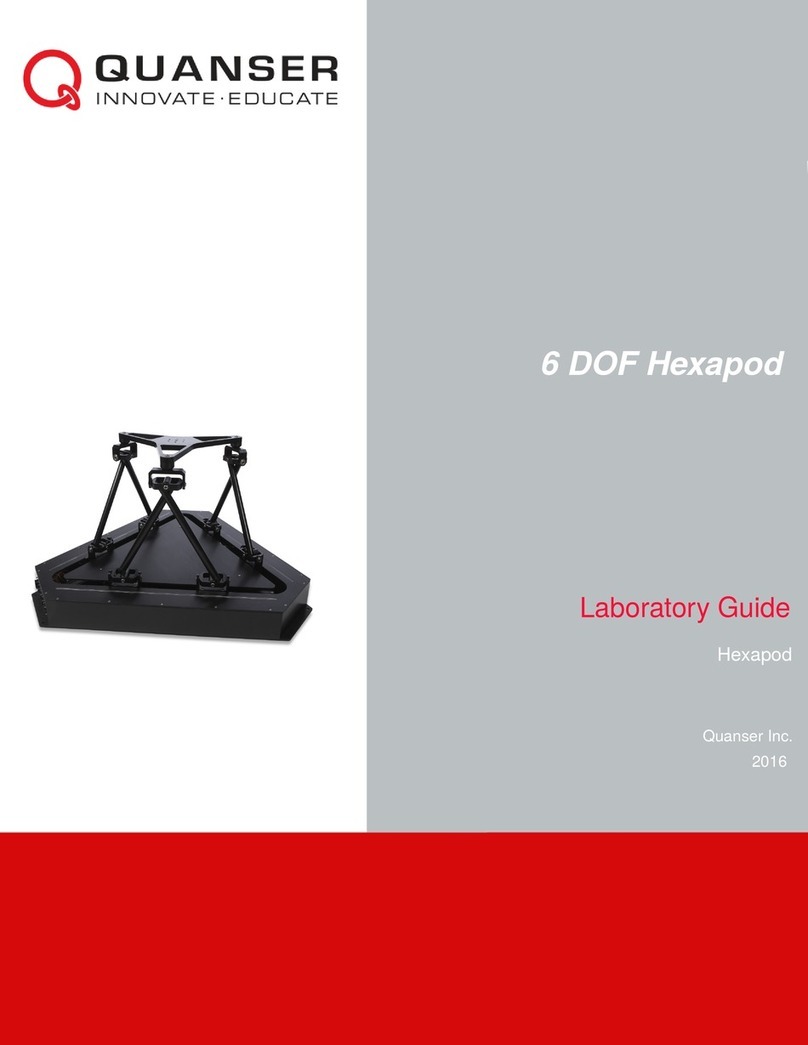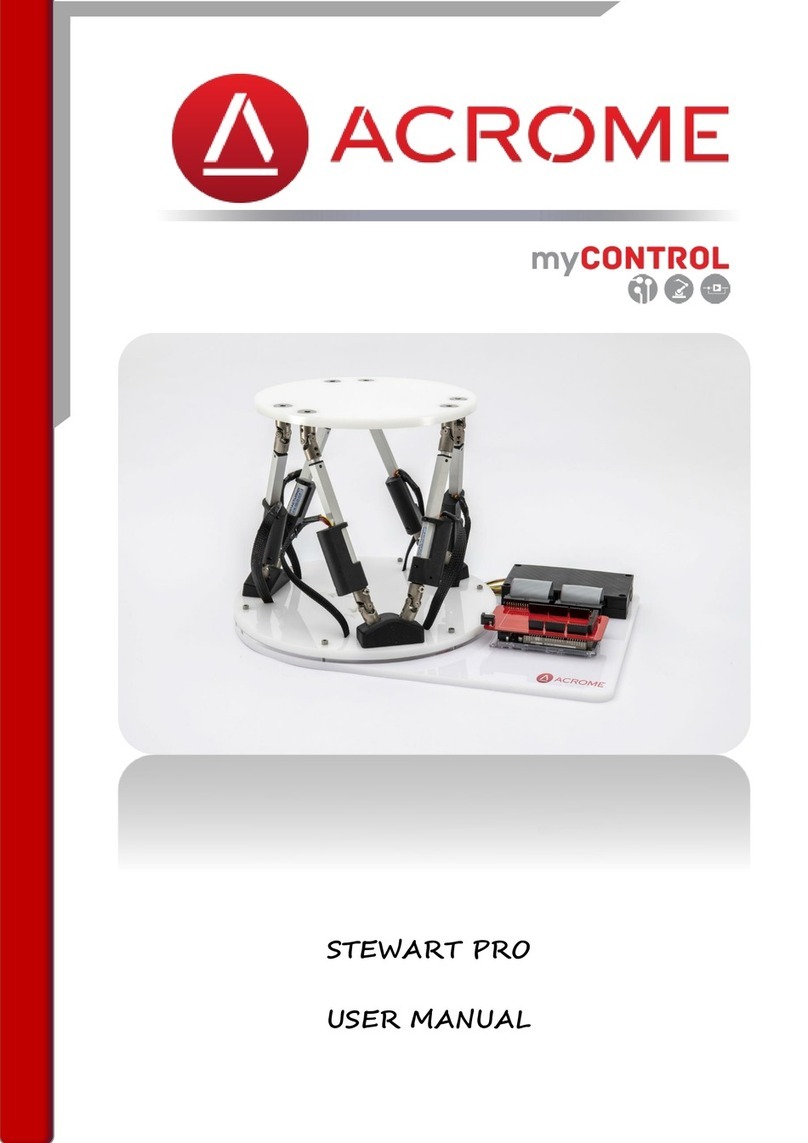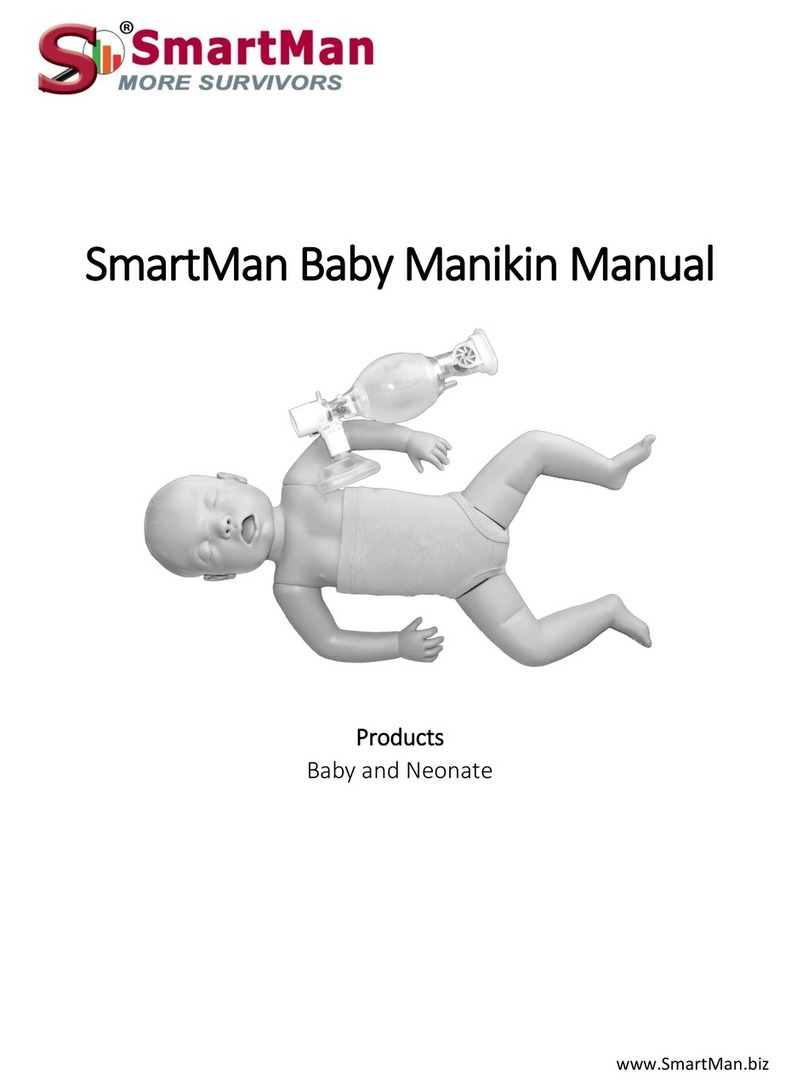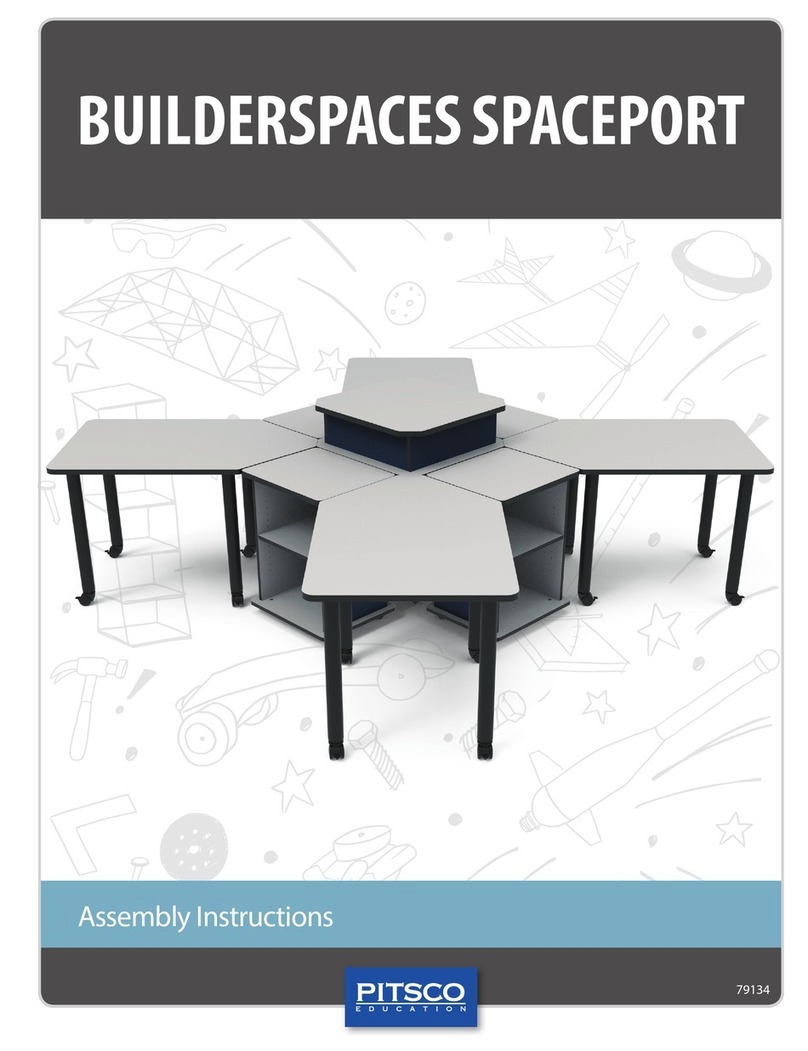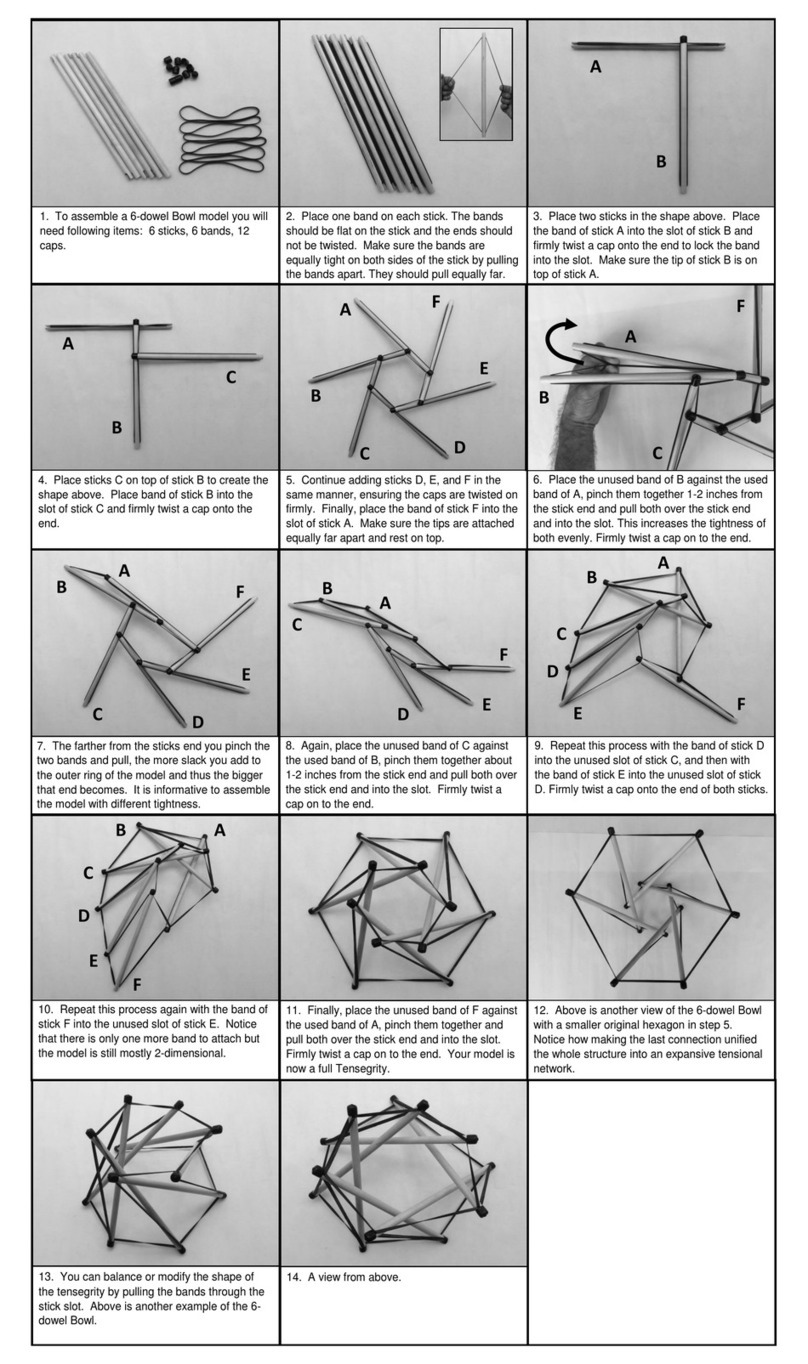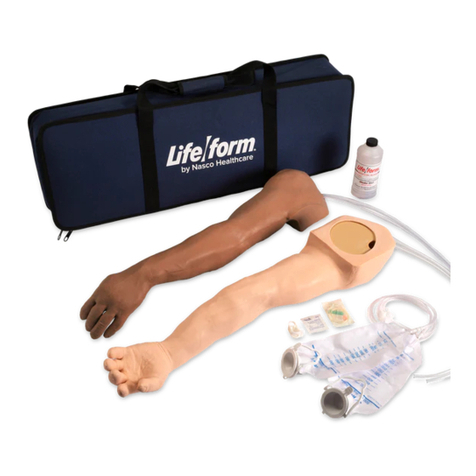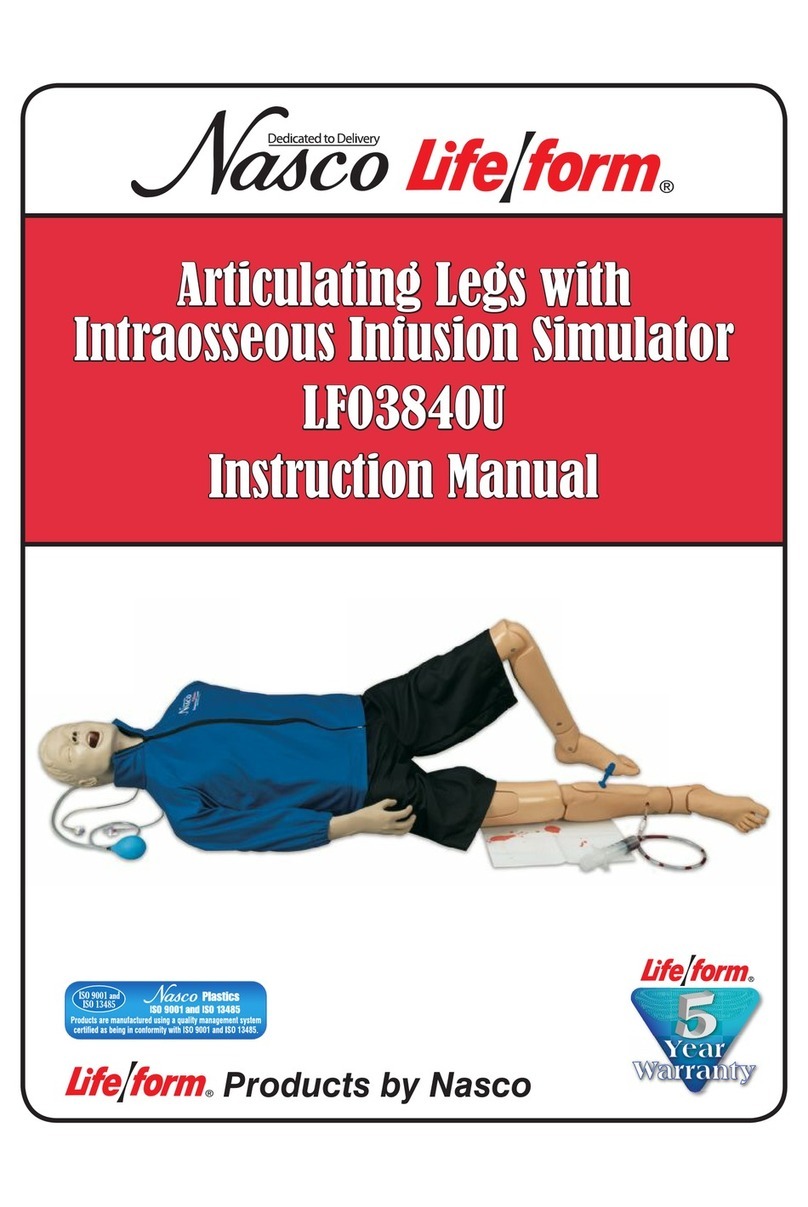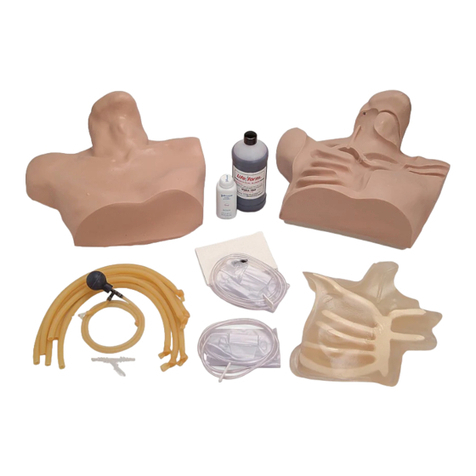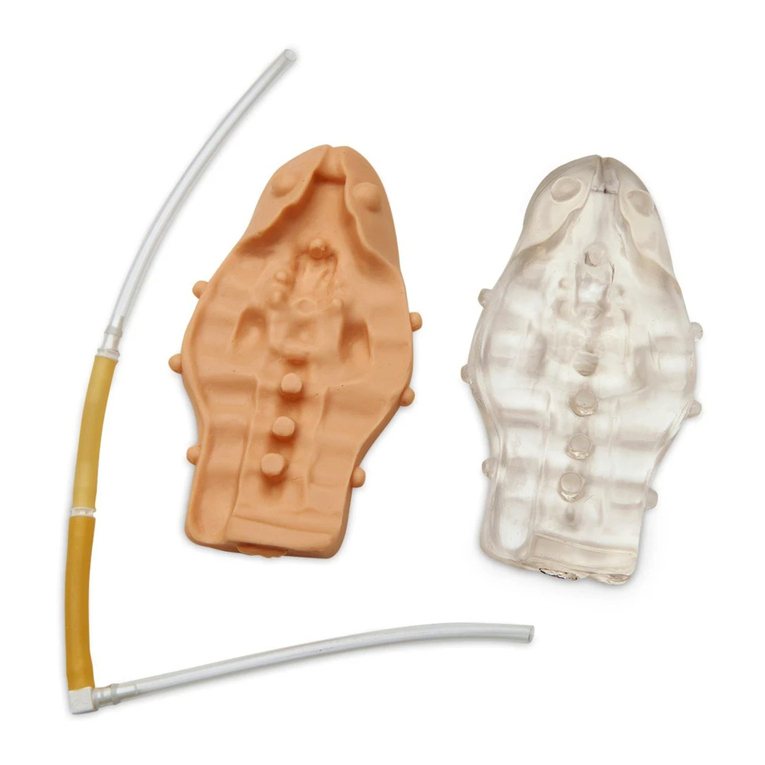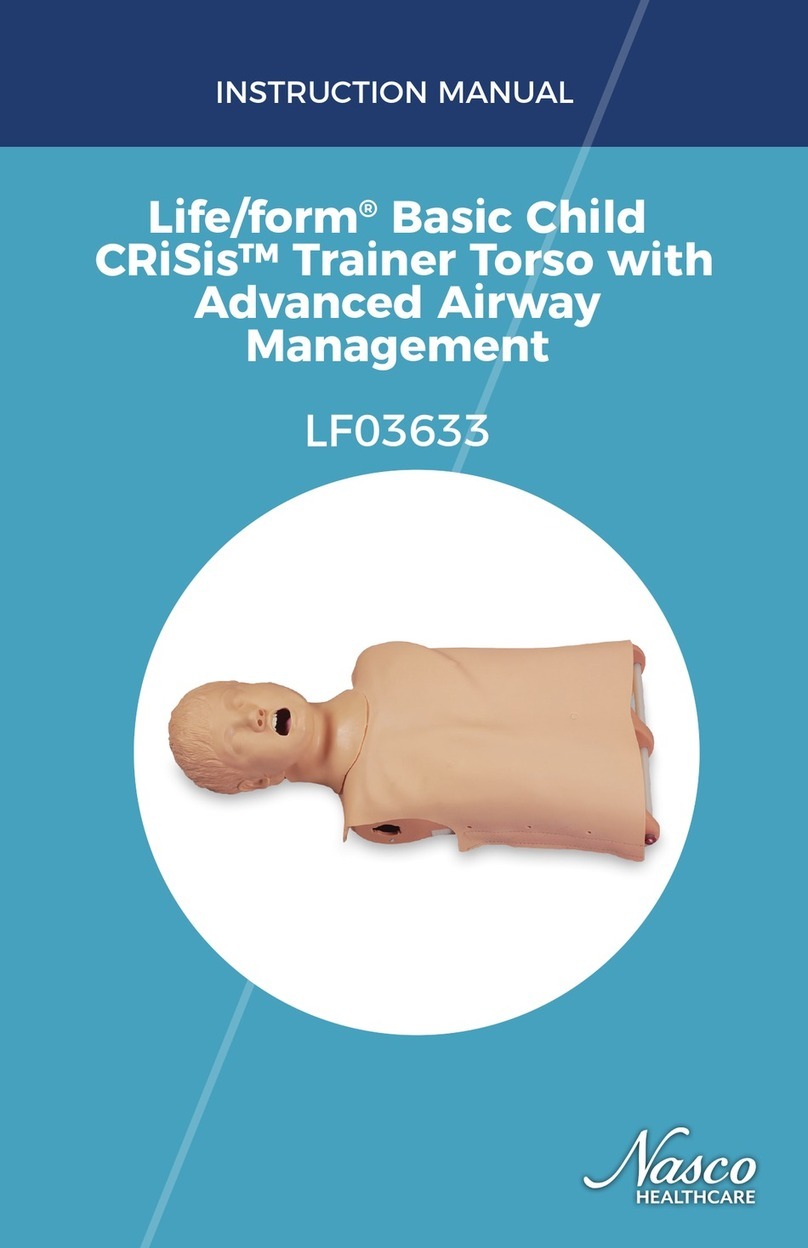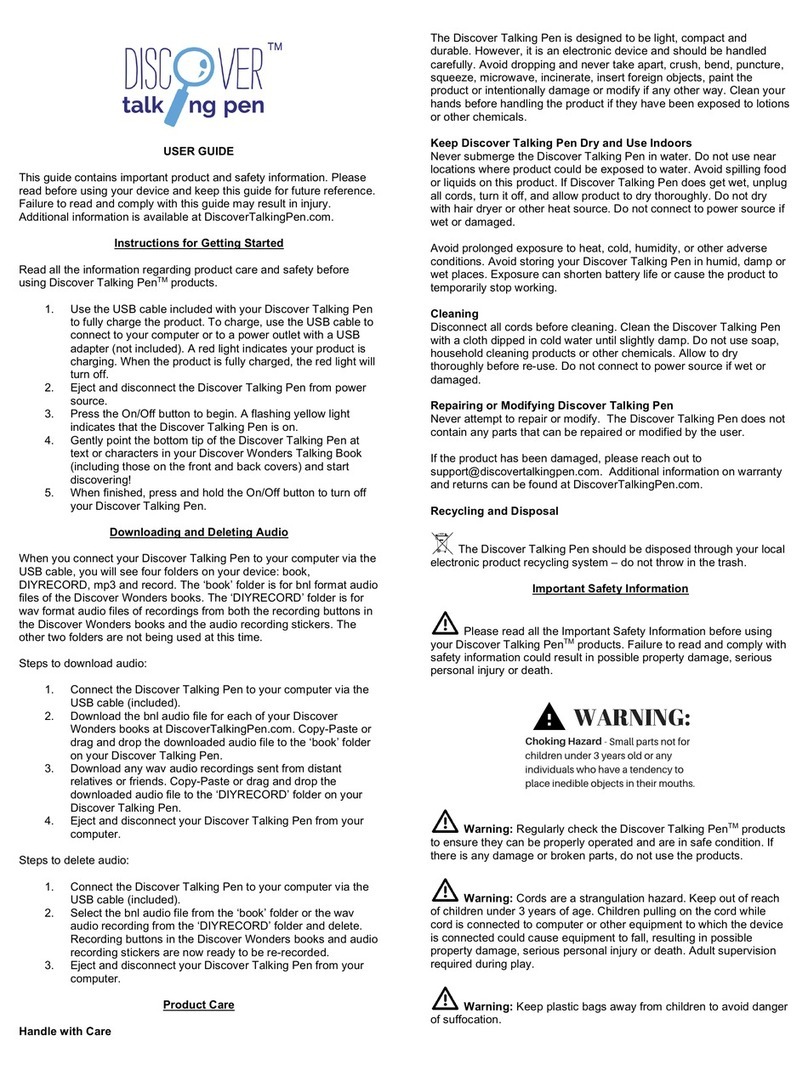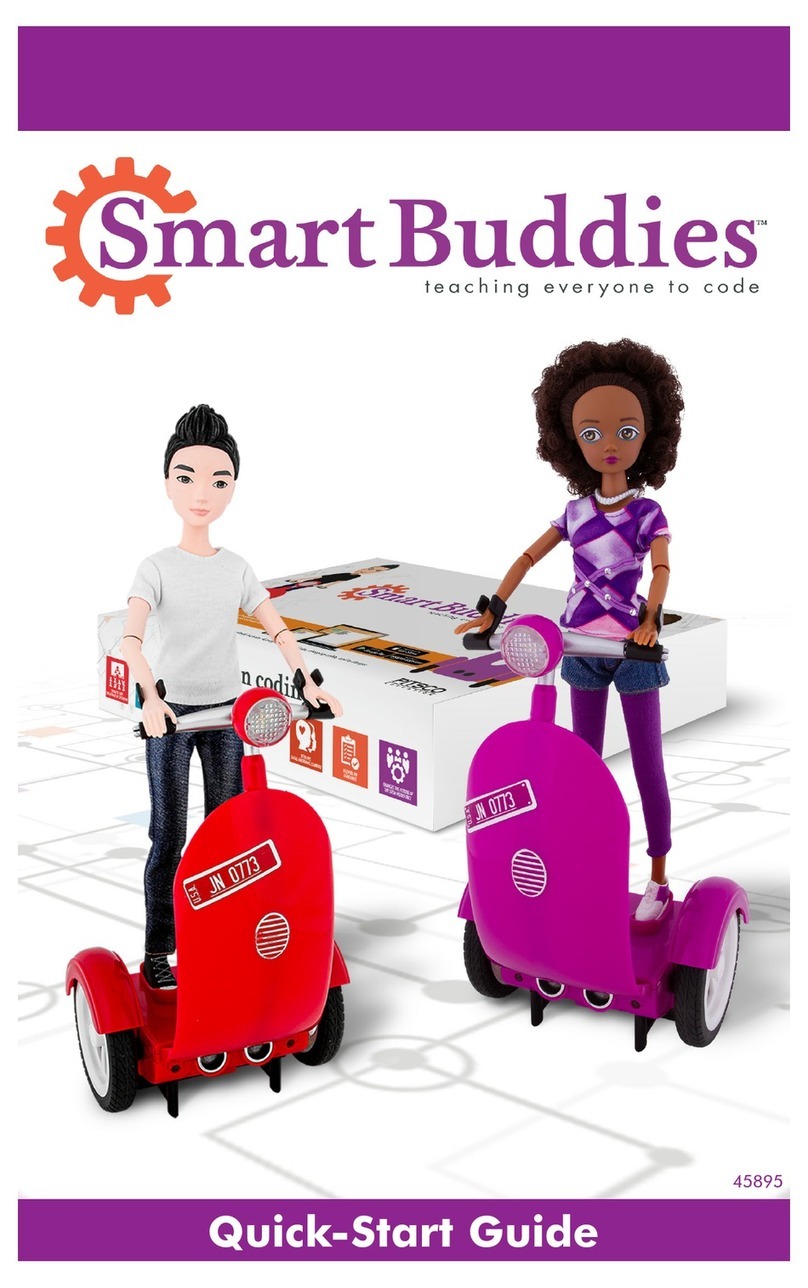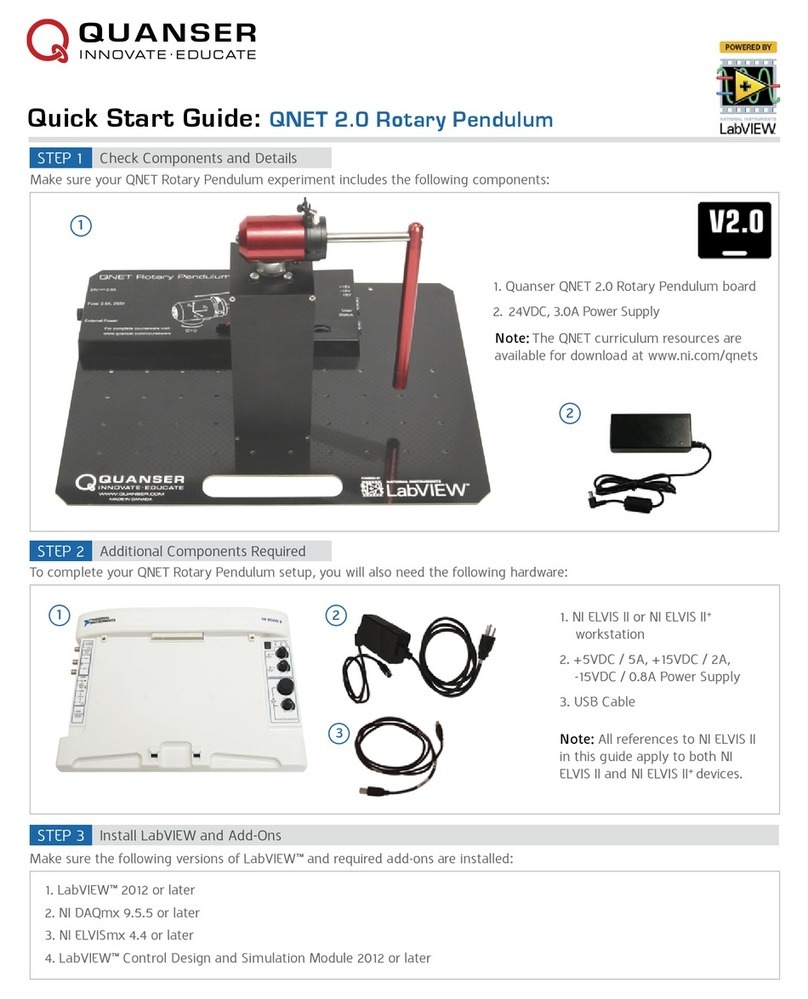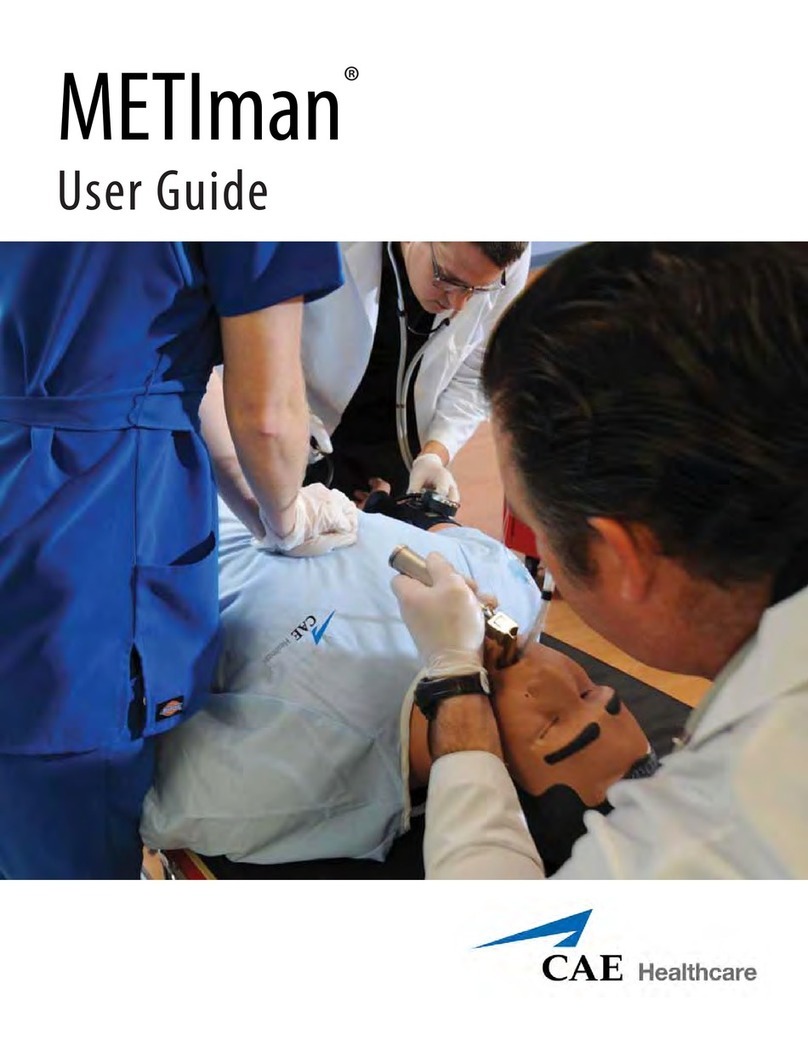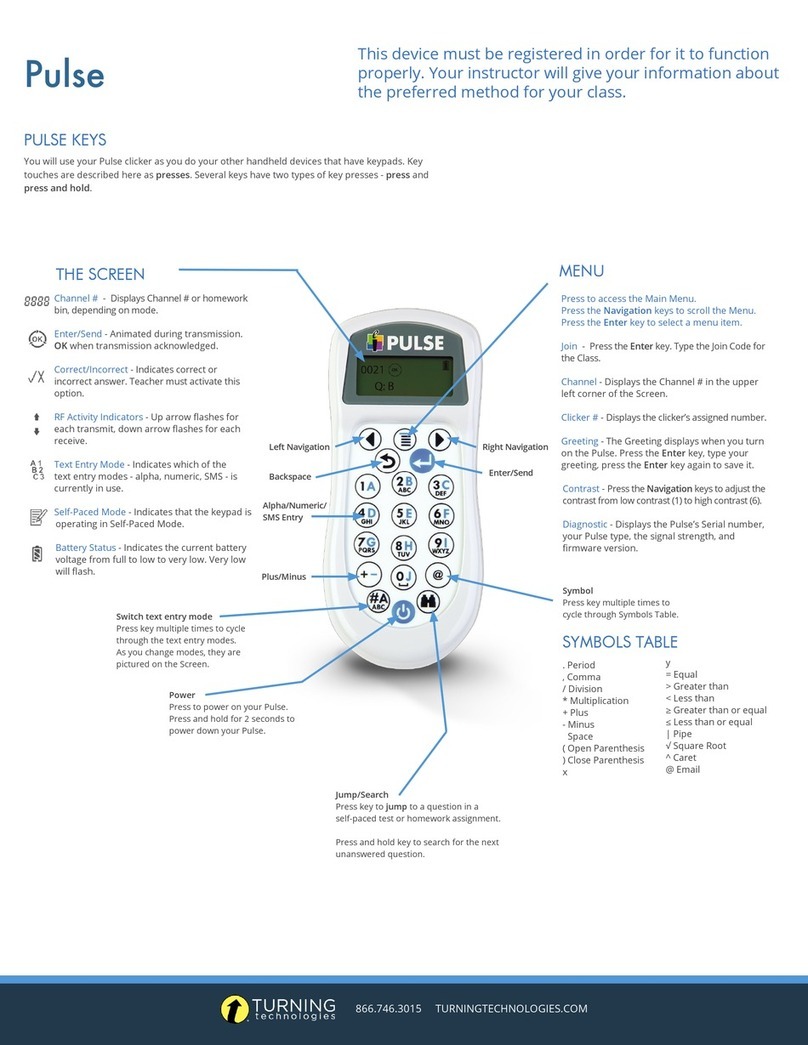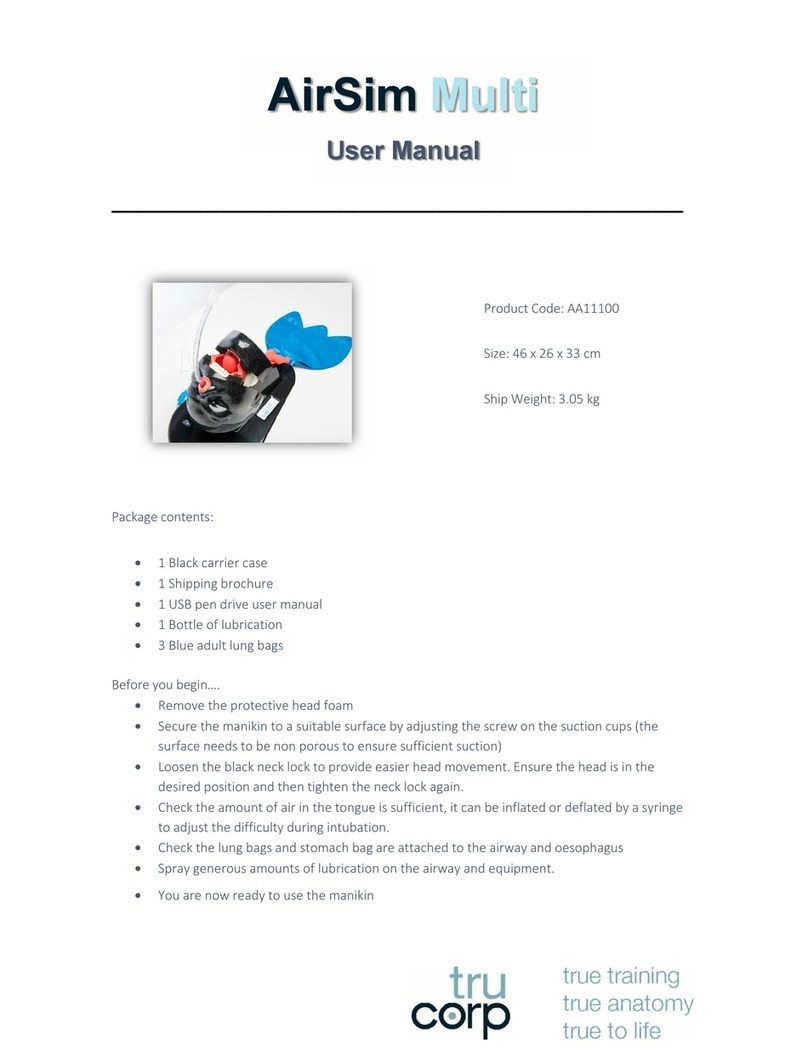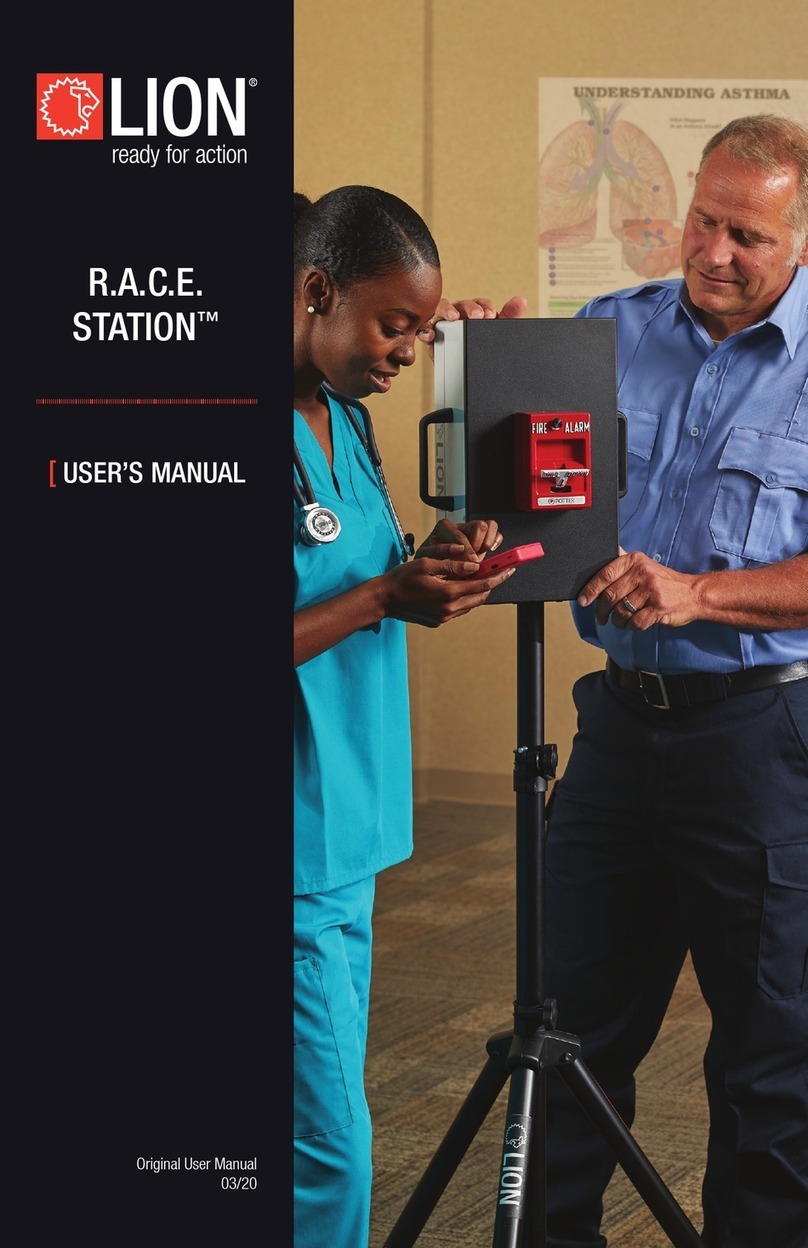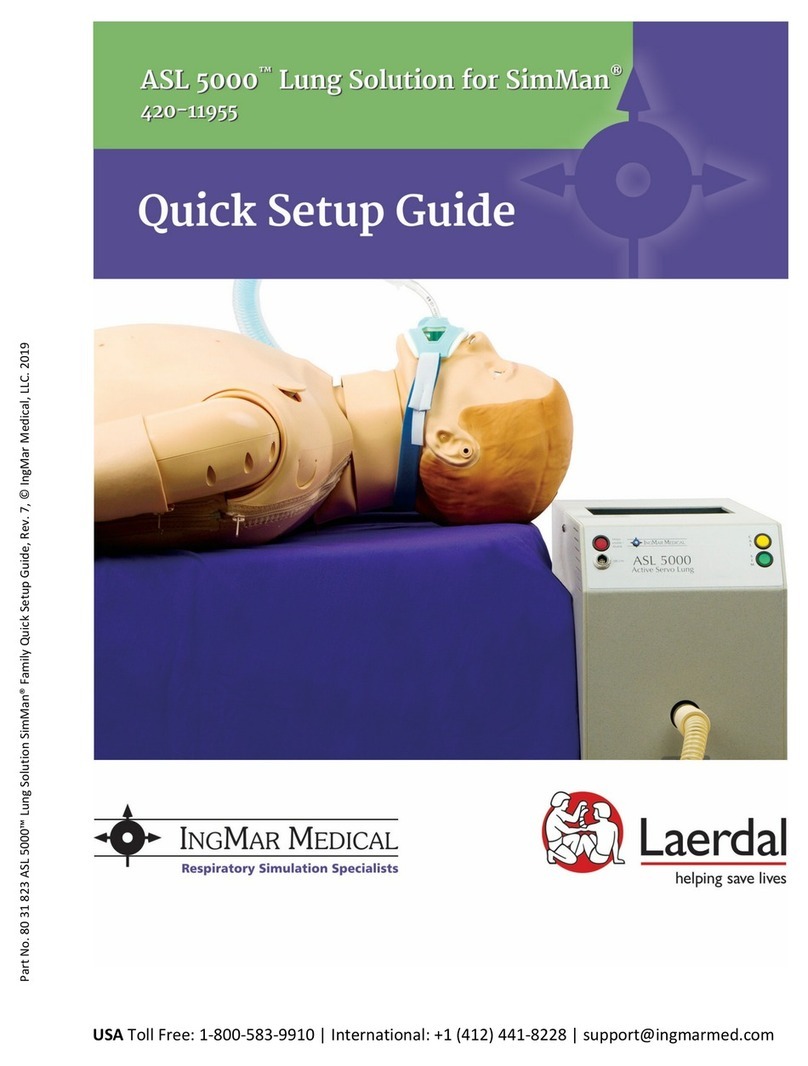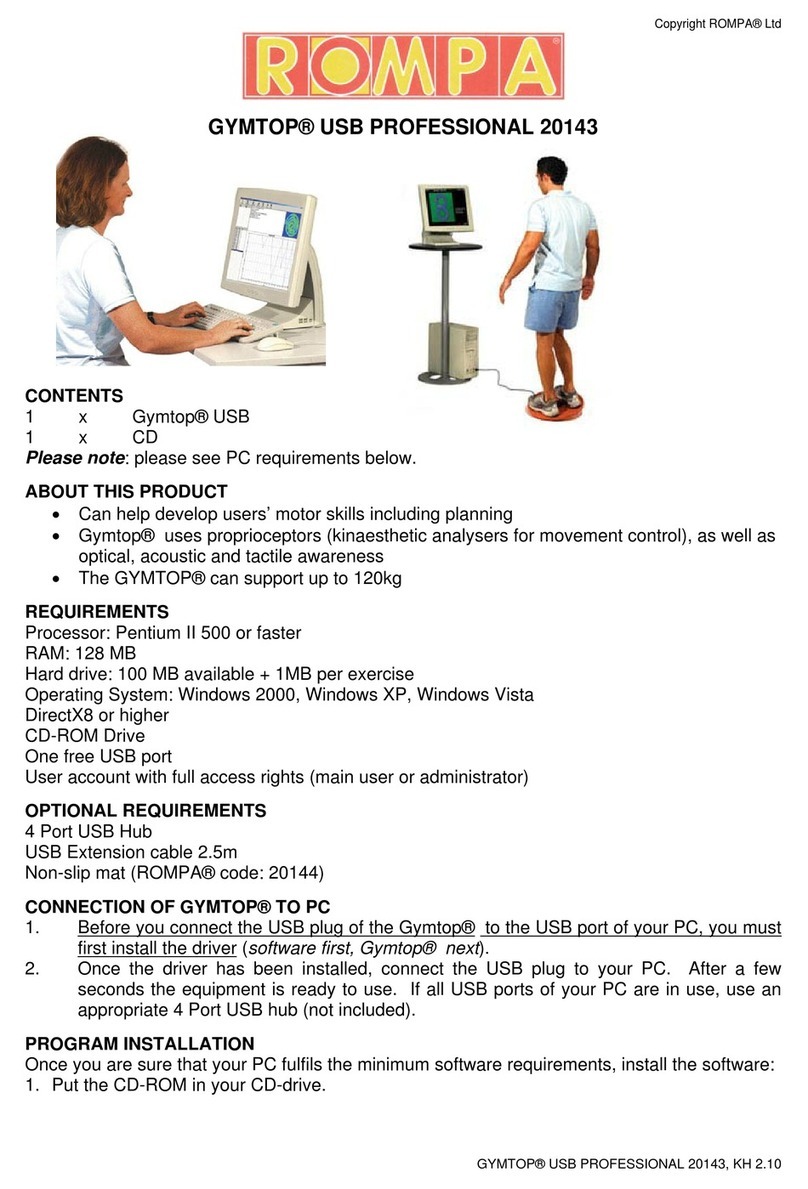
About the Simulator
The complete Crisis Torso Manikin
is a complete resuscitation system
consisting of modular components
that allow you to create a manikin
to suit your changing needs. The
components may be purchased as
a complete package or separately
to update your existing manikin.
Update packages are compatible
with all versions of CPARLENE.
This manual will guide you in set-
ting up, using, and maintaining
each of the available components.
Also included is a list of replacement
parts, supplies, and auxiliary equip-
ment.
By reading and following all instruc-
tions carefully and completely, you
can be sure your Complete Crisis
Torso Manikin will provide years of
valuable service.
LIST OF COMPONENTS
1. Complete Crisis Torso Manikin
2. 8oz. Pump Spray Lubricant
(LF03644)
3. Short Sleeve Jacket
4. Red Caps (3)
FEATURES
1. Airway Management
• Anatomically correct nostrils, teeth,
tongue, oral and nasal pharynx,
larynx, cricoid ring, epiglottis, ary-
tenoid, false and true vocal cords,
trachea, and esophagus.
• Practice oral, digital, and nasal
intubation.
• Intubate with E.T., E.O.A., P.T.L.,
Combitube, and King System
• Practice suction and proper cuff
inflation
• Visible chest rise or stomach infla-
tion
2. CPR
• Adult compression depth
• Visible chest rise
• Mouth to Mouth or Bag-Valve-
Mask compatible
3. Defibrillation Chest Skin
4. Interactive ECG capabilities
SET UP
A. Installing the Chest
Compression Springs
1. Remove the chest skin, chest
plate, and upper compression plate.
Note: Caution must be taken not to
damage the defibrillation electron-
ics attached to the chest skin.
2. Remove the compression springs
from packaging. Insert the springs
into the four plastic cylinders
extending up from the lower com-
pression plate (See Figure 1).
3. Position the upper compression
plate over the springs so that each
of the springs fits up into a cylinder
on the bottom of the upper com-
pression plate (See Figure 2).
B. Connecting the Airway
1. The manikin’s airway has been
disconnected to prevent damage
during shipping.
2. With the chest skin and chest
plate still removed feed the corru-
